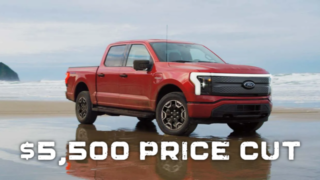U.S. Auto Sales to Rise in Second Half of 2005
U.S. Auto Sales to Rise in Second Half of 2005, Says Standard & Poor’s
But Near-Term Outlook for Big Three Automakers Cautious as Foreign Carmakers Continue to Gain Market Share
NEW YORK, July 7 /PRNewswire/ — Even as the U.S. market for new automobiles remains strong by historical standards, the fortunes of industry participants vary widely and the Big Three automakers overall will lose market share to foreign carmakers, principally the Asian brands, said Standard & Poor’s in its semi-annual survey on the automobile industry, published today. These and other findings are available in the report, Autos and Auto Parts Industry Survey, published twice yearly by Standard & Poor’s, a leading provider of independent investment research, ratings and indices.
Standard & Poor’s currently projects that U.S. light vehicle sales volume will rise 0.2% to 16.9 million units in 2005, from 16.87 million in 2004 — reflecting Standard & Poor’s forecast for stronger growth in the U.S. economy, an improved stock market, a lower unemployment rate, and rising consumer confidence. Standard & Poor’s near-term outlook for the relative performance of the Big Three automakers is cautious, with the highly profitable light truck, minivan, and SUV segment of special concern. Once dominated by the Big Three, this segment faces increasing pricing pressure from successful foreign makers as well as a shift to smaller, newer, and more fuel-efficient vehicles. Standard & Poor’s expects the Big Three’s market share and profit margins in this sector to decline in coming periods.
"The light vehicle segment has up until now been a bastion of profitability for American manufacturers," said Efraim Levy, autos and auto parts analyst with Standard & Poor’s Equity Research Services. "We anticipate that the category will continue to see the effects of heightened competition, with increased pricing pressure and discounting."
Among other highlights of the Autos and Auto Parts edition of Industry Surveys are an examination of additional challenges for U.S. automakers, including: the recent bond rating downgrades of both General Motors Corp. and Ford Motor Co. by Standard & Poor’s Credit Market Services (an entity that operates separately from the Equity Research Services unit that publishes this Survey), significantly higher domestic inventories, planned cuts to North American production, rising steel and oil prices — thus raising the cost of both producing and owning a vehicle, a stronger euro, strong vehicle production growth in China, and weakness in the used vehicle and parts markets.




